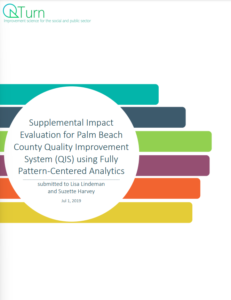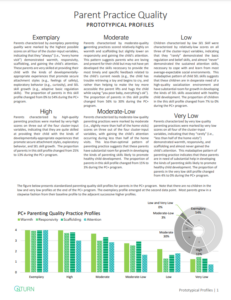Tag: pattern-centered analysis
July 1, 2019
We sought to answer two specific questions about implementation and children’s SEL skill growth: What is the impact of QIS exposure on program quality (i.e., best practices, low staff turnover, great content), particularly for programs that have lower program quality at baseline? What is the impact of exposure to high program quality on student SEL skills?
January 1, 2010
This paper uses pattern centered methods to describe the association between the quality of instruction available and youth’s level of mental engagement with that instruction.
August 20, 2020
A two-page overview explaining our parent practice measures featured in the client report for Newark Trust for Education.


